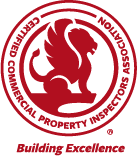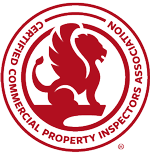Dry cleaning is a method by which clothes and fabrics are cleaned with liquid solvent rather than water. Although this method offers certain advantages over standard “wet” cleaning, commercial dry cleaning shops require chemicals and equipment that present unique safety challenges to commercial property inspectors, as well as the employees, customers and nearby residents of such establishments.
The two most significant safety issues related to dry cleaning businesses are:
- fire. Dry cleaning shops can generate static or frictional sparks, which may occur near highly flammable chemical solvents, garments, and lint.
The following precautions will reduce the chances of a dangerous and costly fire:
- Post “No Smoking” signs and enforce a “No Smoking” policy that prohibits smoking within the building and near its entrances.
- Provide shops with at least two means of escape. Keep these fire exits free of clutter and obstructions.
- Read our articles on firestops and fire extinguisher maintenance and inspection.
- Construct the floor and ceiling of the dry cleaning room using fire-resistant materials, and separate the dry cleaning room from the rest of the building by a partition with a 2-hour fire-resistance rating.
- Install an emergency drainage system to direct petroleum-based solvents to a safe and approved location.
- Equip dry cleaning rooms that use petroleum-based dry cleaning solvents with an approved sprinkler system.
- Install at least two approved BC fire extinguishers inside the dry cleaning room where petroleum-based solvents are used. Provide suitable portable fire extinguishers throughout the shop, according to local commercial fire codes.
- Perform routine maintenance to prevent the accumulation of fluff, lint, and waste that could ignite and cause a fire to spread rapidly.
- poisoning. Since the 1940s, dry cleaners have overwhelmingly preferred the solvent tetrachloroethylene, commonly known as PERC, because it washes fabrics without causing shrinking or fading. While safer than its precursor solvents gasoline and kerosene, PERC is also very toxic; dry cleaning workers — and those who reside in buildings formerly used as dry cleaners — risk a plethora of ailments, including depression of the central nervous system, organ damage, impaired memory, confusion, dizziness, headache, drowsiness, and eye, nose and throat irritation. It’s also an environmental contaminant and a “probable human carcinogen,” according to the World Health Organization. In fact, by 2023, its use will be illegal in the state of California.
PERC contamination generally occurs when treated clothes are transferred from the washer, from which the chemical is released, into the air. Once airborne, it can be absorbed through the eyes, skin and lungs of employees and customers. Contamination may have occurred if a distinct chemical smell is in the air. Even people in adjacent buildings are at risk, as solvent vapors can easily and unknowingly leak into nearby offices and apartments.
Mori Mickelson and her husband suffered nausea, headaches, and dizziness from exposure to PERC-laden air that had leaked from the dry cleaner located downstairs from their New York apartment. “I couldn’t focus. Basically, my mind was floating away on me,” Mickelson told CBS News.
Other solvents can be dangerous, too. These include petroleum-based hydrocarbon solvents, such as Exxon-Mobile’s DF-2000 and Chevron Phillips’ EcoSolv®, which both contribute to smog, although they are somewhat less toxic than PERC.
Inspection Tips
Although dry cleaners are typically heavily regulated businesses under federal, state and local oversight, commercial inspectors may want to ask the manager or owner of a dry cleaning establishment what type of solvent is used, and be on the lookout for strong odors and reported health complaints by employees.
Inspectors may also recommend the following tips to dry cleaning business owners/managers:
- Keep machine doors closed whenever possible, and do not open them while they’re in operation.
- Wait for machine and solvent temperatures to drop before performing maintenance.
- Do not load dry cleaning machines beyond their capacity.
- Immediately flush eyes with water if they come into contact with PERC or other solvents.
- Use soap and water to wash skin that has come into contact with PERC or other solvents.
- Keep the face turned away from the machine while handling solvent-laden clothing.
- Store solvent in air-tight containers.
- Clean up solvent spills immediately.
- Install a closed-tubing system so that employees are not required to manually transfer the solvent to dry cleaning machines.
Other Considerations
In addition to chemical and fire hazards, dry cleaners typically use automated garment conveyors, pressing and finishing equipment, special degreasing machines, custom tailoring and mending areas, bagging devices, scales, carts and wire hangers, as well as additional or enhanced commercial ventilation and cooling systems to address the needs of the industrial machinery and to compensate for the often very hot working conditions. These all present further potential safety hazards related to burns, puncture injuries, slip-and-fall injuries, and overheating, and should be carefully accounted for in a commercial inspection.
In summary, the fire and health dangers inherent in dry cleaning shops can be limited through safe practices and the use and installation of protective devices. Commercial inspectors will want to take extra precautions with regard to inspection and report documentation, and may also want to enlist the assistance of professionals trained in understanding this specialized type of commercial business.

